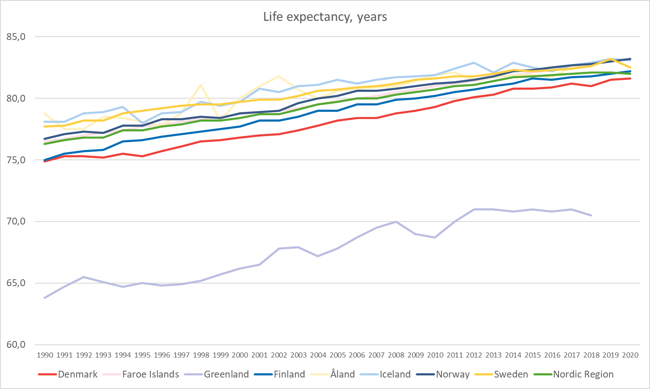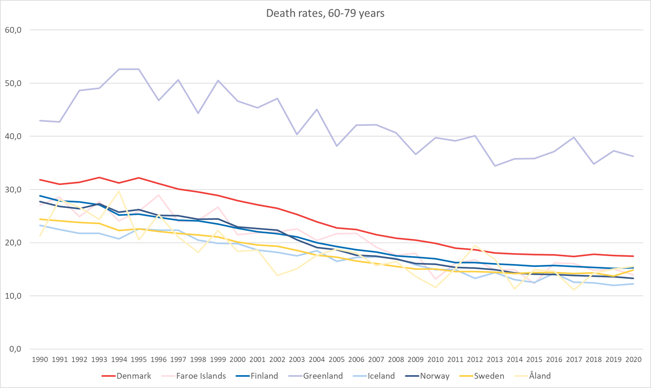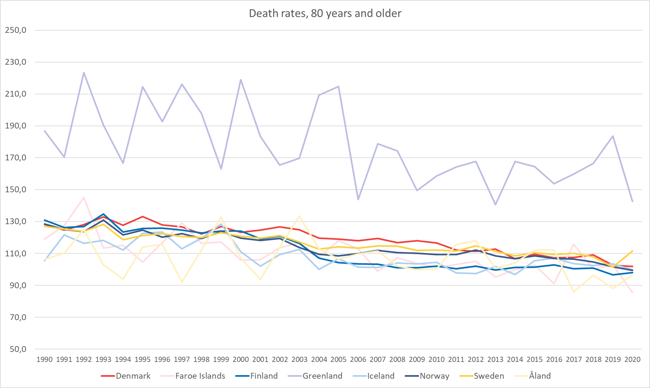Life expectancy in the Nordics lies stable above the 80-year threshold
Life expectancy [1] is increasing and, since the beginning of the 21st century, the Nordic region except Greenland have passed and remained above the 80-year threshold. Åland was the first region to reach the threshold in 2000, followed by Iceland in 2001, Sweden in 2003, Norway in 2004, the Faroe Islands in 2006, Finland in 2009 and Denmark in 2012. Greenland passed the 70-year threshold in 2011. The Nordic life expectancy aggregate [2] for the Nordic region reached the 80-year threshold in 2006.

Of the five Nordic countries Denmark has the shortest life expectancy, followed by Finland. Sweden’s life expectancy is among the longest together with Iceland, whose values fluctuate somewhat. Norway started out in the middle but during the later years Norway has caught up with Sweden.
Concerning the three Nordic self-governing nations, the life expectancy for Greenland stagnated ten years ago, after a period of increase. The life expectancy for the Faroe Islands has been steadily increasing and closely following the Nordic region aggregate. Life expectancies for Åland have been fluctuating but always found in the upper part of the spectrum.
From 2019 to the pandemic year 2020 the life expectancy for Denmark increased by 0.1 years, and for Finland and Norway it increased by 0.2 years while for Iceland it decreased by 0.1 years. For Sweden the life expectancy decreased by as much as 0.7 years. Worth noting is that this major decrease followed a major increase of 0,6 the year before.
The decrease in life expectancy in Sweden is mainly due to increased death rates [3] in 2020 for the age groups ”60 to 79 years” and ”80 years and older”. Death rates for these age groups are shown below (please note different scales on the y-axis). The death rates also increased in the age groups ”20 to 59 years” and ”1 to 19 years”, but only slightly to levels lower than the 2018 levels.


[1] The indicator shows life expectancy at birth. Life expectancy is defined as the average number of years that a person of a given age can expect to live, assuming that age-specific mortality levels remain constant.
[2] The Nordic Region aggregate is comprised of the following countries/areas: Denmark, Faroe Islands, Greenland, Finland, Åland, Iceland, Norway and Sweden.
[3] Death rates is calculated at the number of deaths per 1 000 persons in the different age groups.